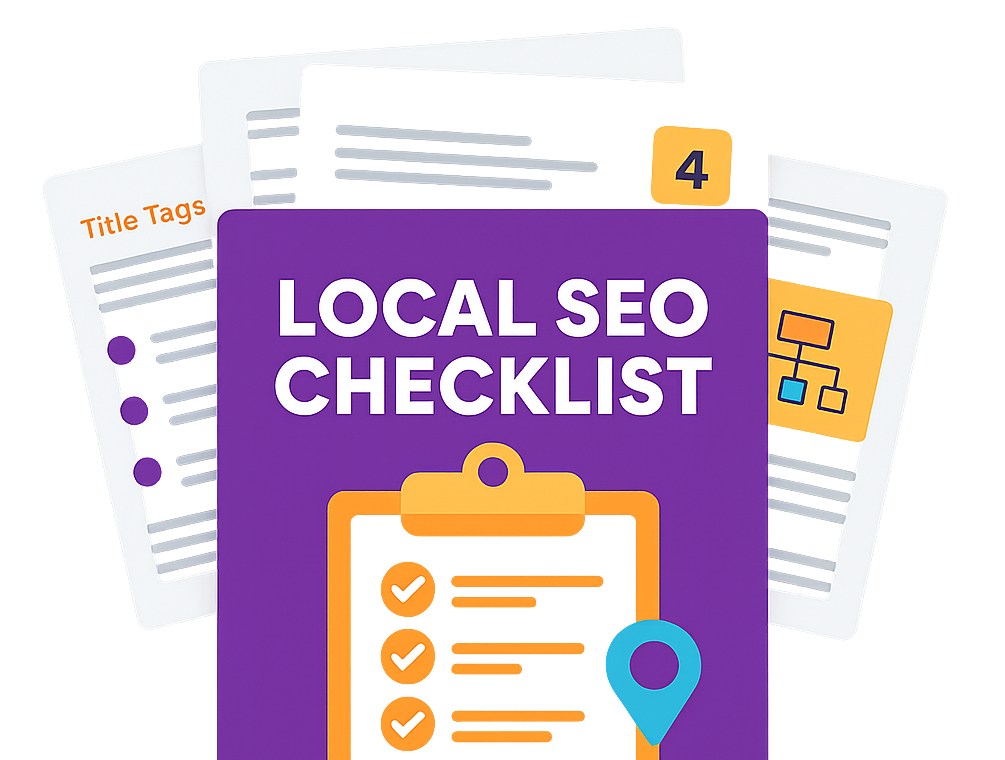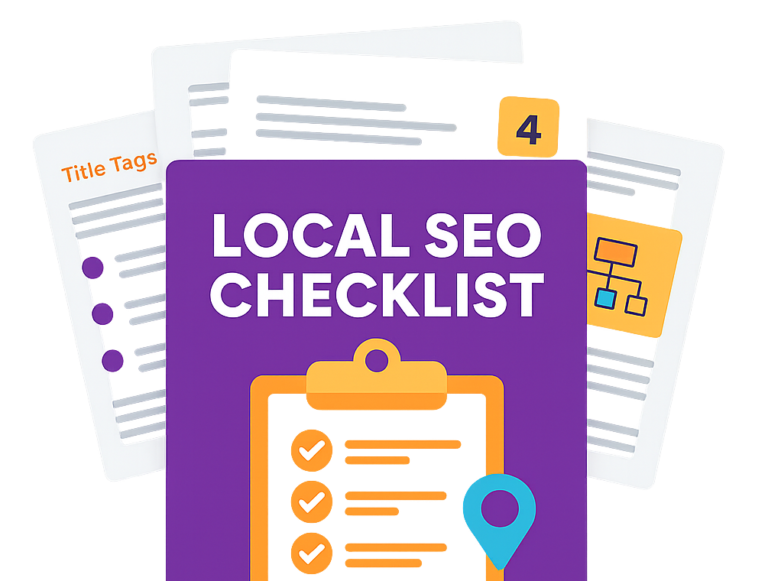You can't just delete a bad Google review. But you can request its removal by flagging it as inappropriate through your Google Business Profile. For the request to work, the review must break Google’s specific content policies—think fake reviews, off-topic rants, or prohibited content.
Your First Move After a Bad Google Review
That sinking feeling when a negative review pops up is something every business owner in the UK knows well. Before you react, take a deep breath. The first and most important step is to assess the situation calmly.
Is this a genuine customer with a legitimate complaint? Is it a simple misunderstanding? Or does it look like something that clearly violates Google's policies?
This initial evaluation is everything. As a business owner, you have zero power to just delete reviews. The entire process is in Google’s hands, and your success hinges on proving the review breaks their rules. The burden of proof is squarely on you.
Understand Your Options
Before you jump into action, you need to understand your limitations and the paths you can take. You basically have two main choices: try to get the review removed, or respond to it publicly. The right move depends entirely on what the review says.
Here’s what to consider:
- Policy Violations: Does the review contain spam, hate speech, or someone's personal information? Is it completely irrelevant to your business? These are clear-cut grounds for removal.
- Genuine Feedback: If the review describes a real (though negative) customer experience, getting it removed is highly unlikely. Your focus should immediately shift to crafting a professional, public response.
- Potential for Resolution: Can you identify the customer and sort out their issue offline? Sometimes, a positive resolution encourages the customer to edit or even remove the negative review themselves.
Why You Can't Just Delete a Review
UK business owners simply don't have a "delete" button for Google reviews, no matter how bad or unfair they seem. Removal requests have to go through Google’s official channels, and they only succeed if the review clearly violates content policies.
While 67% of consumers say a single negative review can sway their buying decision, businesses only manage to get around 15% of inappropriate reviews successfully removed. Google's evaluation process is incredibly strict.
If you want a closer look at what to watch for, check out this helpful visual guide on identifying negative reviews.
Spotting Reviews That Break Google's Rules
Your ability to remove a bad Google review comes down to one crucial thing: does it actually violate Google's content policy? It's a hard truth, but a review being negative, unfair, or even just plain wrong isn't enough grounds for removal. Google will dismiss your request instantly unless you can point to a specific rule that's been broken.
This means you have to take a step back from the frustration. Put on your detective hat and analyse the review's content objectively against Google's official guidelines. Getting this right is the only way to build a strong enough case to get a review taken down.
Common Policy Violations to Look For
Google’s policies are all about making sure reviews are authentic, relevant, and helpful. When a review veers off course, that's when you have a legitimate reason to flag it. Getting familiar with the most common violations is your first line of defence.
Here are the key red flags that Google’s moderation team is trained to spot:
- Spam and Fake Content: This covers everything from reviews posted by bots and fake accounts to content deliberately designed to manipulate your rating. A review from a competitor or a disgruntled former employee also falls under this banner as a clear conflict of interest.
- Off-Topic Rants: Reviews must be about a customer's experience with your business. That's it. Rants about politics, social issues, or personal grudges that have nothing to do with your service are not allowed.
- Restricted Content: This is a wide-ranging category that includes any review promoting illegal goods or services. Think alcohol, gambling, regulated pharmaceuticals, and weapons.
- Hate Speech and Harassment: This is a zero-tolerance area. Any content that incites hatred against people based on race, gender, religion, or other protected characteristics is a severe violation. It also covers personal attacks, bullying, and threats.
"Your emotional reaction to a negative review is valid, but it's not evidence for Google. Your only tool for removal is a calm, factual analysis of whether the review breaches a specific policy. Focus on the 'what', not the 'how it made you feel'."
To help you quickly cross-reference a troublesome review, I've put together a simple checklist based on Google's key policies.
Google Review Policy Violations Checklist
| Violation Type | Description & Examples |
|---|---|
| Spam & Fake Content | Content not based on a real experience. Includes fake engagement, impersonation, misinformation, and misrepresentation. Example: A competitor leaves a 1-star review pretending to be a customer. |
| Restricted Content | Promoting illegal acts, dangerous products, or regulated goods like alcohol, tobacco, guns, or gambling. Example: A review that includes a link to buy prescription medication. |
| Offensive Content | Obscene language, hate speech, harassment, bullying, or sexually explicit content. Example: Using racial slurs or personally attacking an employee. |
| Off-Topic Content | Review isn't about the customer's experience with your business. Includes political commentary or personal rants. Example: A review complaining about local parking rather than your service. |
| Conflict of Interest | Reviews from current/former employees, competitors, or anyone with a financial stake. Example: An ex-employee leaves a vindictive review after being let go. |
| Terrorist Content | Any content that promotes terrorist acts, incites violence, or celebrates terrorist attacks. This is an extreme but serious violation. |
| Personally Identifiable Information (PII) | Includes a person's full name, phone number, email address, or home address without consent. Example: An angry customer posts an employee's personal mobile number. |
Use this table as your go-to guide. If you can confidently tick one of these boxes, you have a solid foundation for your removal request.
Identifying More Subtle Breaches
Beyond the really obvious violations, some breaches are a bit more subtle and require a closer look. For instance, a review might seem legitimate at first, but it could be a case of impersonation, where someone is pretending to be a different customer or individual just to cause trouble.
Another critical violation to watch for is the inclusion of personally identifiable information. If a review contains a personal phone number, home address, or a full name used in a harassing way, it's a clear breach of privacy rules and should be flagged immediately.
Building your argument around these specific policy points is what will make or break your case when you decide to take the next step and learn how to remove a bad Google review.
How to Flag a Review for Removal
Right, you've done your homework and you're pretty sure a review breaks Google's rules. Now it's time to act. Flagging the review is the official way to get Google's moderation team to take a look. It’s a simple process, but getting the details right is absolutely crucial if you want to see that review gone for good.
Don’t just flag a review because you don’t like it—that’s a fast track to getting your request ignored. You need to pinpoint the exact policy the review violates. Nailing this part gives you the best shot at having a moderator agree with you and take it down.
The Flagging Process Explained
You can report a dodgy review directly from your Google Business Profile or right from where you see it in the search results or on Maps. The goal is to find that little menu option next to the review you want to dispute.
Here's the basic flow of what you need to do.
As the visual shows, it’s three simple actions: find the review, hit the report option, and send off your request with the right justification.
Let’s break it down into a bit more detail:
- Find the Review: First, pull up the review in question. You can do this from your Google Business Profile dashboard, a quick Google Search, or on Google Maps.
- Locate the Report Option: Look for the three vertical dots next to the reviewer’s name. Give those a click to open a small menu.
- Select 'Report Review': From that menu, choose the option to report the review. A new window will pop up asking for more information.
- Pinpoint the Violation: This is the most important step. You'll see a list of policy violations. Pick the one that best fits why the review is out of line, using that checklist from the last section.
- Submit Your Request: Once you’ve selected the violation, just follow the prompts to submit the report. Google will send you an email to confirm they’ve got it.
Google’s initial review is often automated. A real person typically only gets involved if a case is escalated. This makes it vital to pick the most accurate and obvious violation on your first try to get things sorted quickly.
Monitoring Your Request and What to Expect
Once you've flagged it, you'll need to be patient. Google has to investigate, and this can take anywhere from a few hours to several days. You’re not left completely in the dark, though. You can check the status of your request using the "Report a review" tool found in the help section of your Google Business Profile.
The screenshot below shows exactly what this tracking interface looks like.
You’ll be able to see the status of each case, whether it's "Pending" or a "Decision made." It’s a handy tool for keeping tabs on where things stand. For a more detailed look into this whole process, our guide on how to remove a negative review from Google offers some extra tips.
It's important to keep your expectations in check. Google gets a massive number of these reports, so not every request gets approved, even if you’re convinced it’s a slam dunk. If your first attempt is denied, don't throw in the towel just yet. There are appeal options available, and we’ll get to those next.
What to Do If Your Flagging Request Is Denied
It’s incredibly frustrating when Google denies your removal request, especially when you’re certain a review is fake or completely unfair. Getting that "Decision made" notification, only to see the review is still live, can feel like you’ve hit a brick wall. But this isn't always the end of the road.
When your initial flag fails, it's usually because the automated system or the first-level moderator couldn't spot a clear, obvious violation of policy. Your next move is to escalate the issue and give a human the context and evidence that the simple flagging process just doesn’t allow for. This is where you can build a much stronger case.
Escalating Your Case to Google Support
If the standard flagging process lets you down, your next port of call is to contact Google Business Profile support directly. This turns your simple report into a proper support ticket, getting you in touch with a real person to explain the nuances of the situation.
You can typically find the contact options within the help section of your Google Business Profile dashboard. Make sure you have this information ready:
- A Case ID: If you have one from your first flagging attempt, include it.
- A link to the review: Make it as easy as possible for them to find the exact review.
- A clear explanation: Briefly state which policy the review violates and why you believe your initial request was incorrectly denied.
This direct approach often gets better results because it bypasses the initial, often automated, screening. It shows you're serious and ready to provide more information to back up your claim.
Building a Stronger Appeal with Evidence
When you escalate your request, your goal is to arm the support agent with irrefutable proof that the review is illegitimate. Vague complaints just won't cut it; you need to present a well-documented case file.
Your appeal's success hinges on the quality of your evidence. A detailed timeline, customer records, and screenshots transform your claim from a simple complaint into a credible report that Google is more likely to act upon.
Start gathering the following types of documentation:
- Screenshots: Capture the review itself, the reviewer's profile (especially if it looks suspicious, like having no other reviews), and any related social media posts or messages.
- Customer Records: If the review mentions a specific date or incident, check your CRM or sales records. If you have no record of that person ever being a customer, state this clearly in your appeal.
- A Detailed Timeline: Write a clear, concise summary of events. For instance, if a disgruntled ex-employee posted a review, document their employment dates and the timing of the negative post.
Leveraging the CMA’s Influence in the UK
For businesses in the UK, there’s another powerful angle to your appeal. The UK's Competition and Markets Authority (CMA) concluded a five-year investigation that resulted in Google agreeing to enforce stricter measures against fake reviews specifically within the UK market from January 2025.
This agreement requires Google to sanction UK businesses and individuals involved in posting or soliciting fake reviews to manipulate ratings. Referencing this commitment in your appeal can add significant weight, as it shows you are aware of Google's specific obligations to UK regulators. You can learn more about Google's agreement with the CMA on tackling fake reviews on the official government website.
Responding to Negative Reviews Like a Pro
So, what do you do with a negative review? Whether Google agrees to remove it or not, your public response is your most powerful tool. This is your moment to speak directly, not just to the unhappy customer, but to every single potential customer who reads that review down the line. A carefully crafted reply can completely neutralise a bad comment and show everyone what a professional outfit you are.
Ignoring a negative review is almost always the wrong move. In fact, research shows that businesses that respond to reviews are seen as 1.7 times more trustworthy than those that don't. Think of your reply as a live demonstration of your customer service, turning a negative into a genuine brand-building opportunity.
The Acknowledge, Apologise, and Act Framework
Crafting the perfect response doesn't need to be stressful. I always recommend a simple, effective framework: Acknowledge, Apologise, and Act. This structure helps you hit all the key points without getting dragged into a messy public argument.
Here’s how it breaks down:
- Acknowledge Their Experience: Start by thanking the customer for their feedback. Mention their specific complaint. This instantly validates their feelings and shows you've actually taken the time to read and understand their issue.
- Apologise Sincerely (but carefully): Offer a genuine apology for their poor experience. You're not necessarily admitting fault, but you are sorry they didn't have the positive experience you strive to provide. Something as simple as, "We're sorry to hear your visit didn't meet expectations," works perfectly.
- Act by Taking it Offline: Never, ever try to solve a complex problem in a public review thread. Provide a direct contact method—an email address or a phone number is ideal—and invite them to discuss it further. This shows you're proactive and serious about finding a solution.
Effectively managing online reviews is a massive part of online reputation management, and it's all about turning that negative feedback into a positive experience that builds trust.
Real-World Response Examples
Let's see this framework in action. Imagine a local café gets a one-star review saying, "The coffee was cold and the staff were rude."
Here's the wrong way to handle it:
- A bad response: "Our coffee is never cold and our staff are very friendly. You must be mistaken." This just comes across as defensive and will alienate anyone reading it.
And here's the right way:
- A good response: "Hi [Customer Name], thank you for sharing your feedback. We're very sorry to hear your coffee wasn't up to standard and that you had a poor interaction with our team. This isn't the experience we aim to provide. Please could you email us at manager@cafe.co.uk so we can look into this for you?"
See the difference? It's calm, professional, and solution-focused.
Remember, your response is less about winning back one unhappy customer and more about demonstrating your commitment to quality and service to the hundreds of future customers reading the exchange. It's a marketing opportunity in disguise.
For a quick reference, here’s a simple table to keep in mind when you’re staring at a tough review and wondering what to write.
Dos and Don'ts for Responding to Negative Reviews
| Do | Don't |
|---|---|
| Respond quickly. Aim for 24-48 hours. | Get defensive or make excuses. |
| Address the reviewer by name. | Offer discounts or freebies publicly. |
| Keep it professional and polite. | Use generic, copy-pasted responses. |
| Acknowledge their specific concerns. | Get into a back-and-forth argument. |
| Take the conversation offline. | Violate the customer's privacy. |
Following these simple rules helps you stay in control of the narrative and protects your brand’s reputation.
Responding professionally is a non-negotiable part of your overall digital presence. Polishing your public replies is just as important as your general Google My Business optimisation efforts, as both directly impact how new customers see you. By consistently applying a calm, professional, and helpful tone, you build a reputation for being a business that genuinely cares.
Building a Proactive Reputation Strategy
Reacting to negative reviews is one thing, but the best long-term defence is always a good offence. It’s time to shift your mindset from damage control to active reputation building. This is how you create a resilient online presence that can easily absorb the odd bad review without taking a major hit.
The core idea is simple: get your happy customers to share their positive experiences. This builds a steady stream of authentic, positive feedback that naturally waters down the impact of any negative comments. It also boosts your overall star rating and builds a foundation of trust with potential new customers.
Encouraging Genuine Positive Feedback
Getting satisfied customers to leave a review doesn't need to be some complicated, drawn-out process. In my experience, simple, well-timed prompts are incredibly effective. You don't need a complex system, just a consistent way of asking.
Here are a few ethical and effective tactics that just plain work:
- Email Follow-ups: A day or two after a purchase or service, send a personalised email asking for their thoughts.
- In-Store Prompts: Use QR codes on receipts, tables, or near the checkout that link straight to your Google review page.
- Social Media Calls-to-Action: Every now and then, post a friendly request on your social channels asking followers to share their experiences.
This consistent effort is a cornerstone of effective online reputation management and SEO, as it directly shapes how your business shows up in search results.
Don’t just ask for reviews; make it ridiculously easy for customers to leave them. A one-click link in an email is far more likely to get a response than a vague suggestion to "find us on Google."
It's also absolutely vital to play by the rules. In early 2025, Google started a massive purge of fake 5-star reviews in the UK, signalling a serious commitment to authenticity. This move really highlights the importance of earning genuine reviews instead of looking for shortcuts. To stay ahead of the curve, it's worth reading up on Google's evolving review policies and actions.
Frequently Asked Questions
When you're trying to figure out how to handle a bad Google review, a lot of questions come up. It can feel like a bit of a minefield. Here are some quick, straight-to-the-point answers to what UK business owners most often ask.
Can I Pay to Have a Bad Review Removed?
In a word, no. You absolutely cannot pay Google to remove a negative review. The same goes for any third-party service claiming they can get it done for a fee.
Any company promising a guaranteed removal for payment is almost certainly a scam and goes directly against Google's own policies. The only legitimate path forward is through Google's official flagging and appeal process.
How Long Does Google Take to Remove a Review?
This is the million-pound question, and the answer is… it varies. A lot.
After you've flagged a review, Google's first check is often automated, and you might see a result within a few hours. But if it needs a real person to look at it, you could be waiting several days or even longer. It’s one of those situations where you just have to be patient.
Does Responding to a Review Affect its Removal?
Responding to a review won't directly influence Google's decision to remove it. That decision is made purely on whether the review breaks their content policy.
However, that doesn't mean you should stay silent. A professional response is absolutely essential for your online reputation. It shows every other potential customer reading the reviews that you're engaged, professional, and you care about feedback.
Always respond to a legitimate negative review, even while you're waiting for a decision from Google. Your public reply demonstrates professionalism to every other customer who sees it.
Improving your overall online visibility can also help lessen the impact of a single negative comment. For guidance on this, our advice on affordable SEO services for small business can provide a helpful starting point.
At Bare Digital, we understand how a single review can impact your business. If you need expert help managing your online reputation and boosting your search presence, get in touch for a free, no-obligation SEO Health Check. https://www.bare-digital.com








